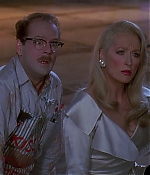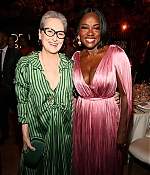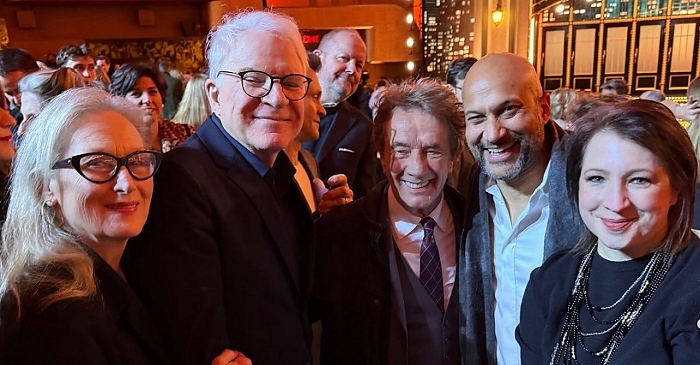
Death Becomes Her
July 31, 1992
· Universal Pictures
· 104 minutes
|

“I’ve always been a fan of dark humor which takes an inherently serious concept and put a satirical twist on it,” says Robert Zemecki, director of “Death Becomes Her”. The casting of the film defies type. “Goldie has never been seen as a psychotic murderess, Meryl has never been in a special effects situation where she has had to spearhead the action, and turning Bruce into a meek, anti-hero and not the man of action was fun,” says Zemeckis. “Death Becomes Her” was filmed in and around Los Angeles. Locations ranged from the manicured mansions and chic restaurants of Beverly Hills to a Malibu beach house to the historic Wilshire Ebell Theatre downtown. One of the most challenging apects of filming Death Becomes Her was make-up. Meryl Streep’s character wears prosthetic makeup through much of the film to appear 50 and then suddenly appears very youthful again. She breaks her neck, twists her head backwards; she dies, she gets smashed by a shovel, and she becomes a zombie. Says visual effects supervisor Ken Ralston, “We did shots with Meryl Streep’s head twisted around 180 degrees, Goldie Hawn with a huge hole blasted through her stomach and Bruce Willis falling off a building and crashing through a stained glass window. We used a lot of miniatures, computer graphics, digital technology and blue screen work.”
My first, my last, my only. I think it’s tedious. Whatever concentration you can apply to that kind of comedy is just shredded. You stand there like a piece of machinery – they should get machinery to do it. I loved how it turned out. But it’s not fun to act to a lampstand. ‘Pretend this is Goldie, right here. Uh, no, I’m sorry, Bob, she went off the mark by five centimeters, and now her head won’t match her neck!’ It was like being at the dentist. I thought that movie was a documentary about the Los Angeles fixaction with aging… Women treat themselves that way because we’re given power based on how we look – never mind Margaret Mead. (Meryl Streep, Entertainment Weekly, March 2000)
The movie was heavily edited for theatrical release after test screenings. The two major changes are the ending, which was originally a bit less bleak but still disappointed test audiences, and an entire subplot involving Tracey Ullman as a bartender who befriends the Bruce Willis character. Also, many scenes were shortened, including a lengthy sequence the day after Meryl Streep’s character is released from the hospital with a broken neck. Also, character scenes by supporting players such as Jonathan Silverman as Streep’s agent were cut to the point of becoming cameos, and a couple of scenes with Isabella Rossellini’s character were also shortened. The reason for most of the changes was due to Zemeckis’ desire to liven the pace, as well as cutting extraneous jokes that didn’t further the plot or character. The reason for the deletion of the entire Ullman subplot had to do with the removal of the original ending. In it, Streep and Hawn are outfoxed by Willis and Ullman, who escape with the potion. Flash forward 27 years, and Streep and Hawn bump into a now-happily retired couple. Though Streep and Hawn remain beautiful, they lack the love and life that Willis and Ullman created without the use of any magical youth potions. Hence the moral of the story was the same, but apparently, Zemeckis and the test audiences didn’t feel the payoff was rewarding enough. When it was changed to the current ending, the entire Ullman subplot seemed extraneous, so was cut. While these scenes have never been released as a home video or DVD feature, you can still see Ullman in the theatrical trailer of the film. “Death Becomes Her” won an Academy Award in 1993 for its Visual Effects.
☆ Golden Globe Award – Best Actress in a Motion Picture, Musical or Comedy














